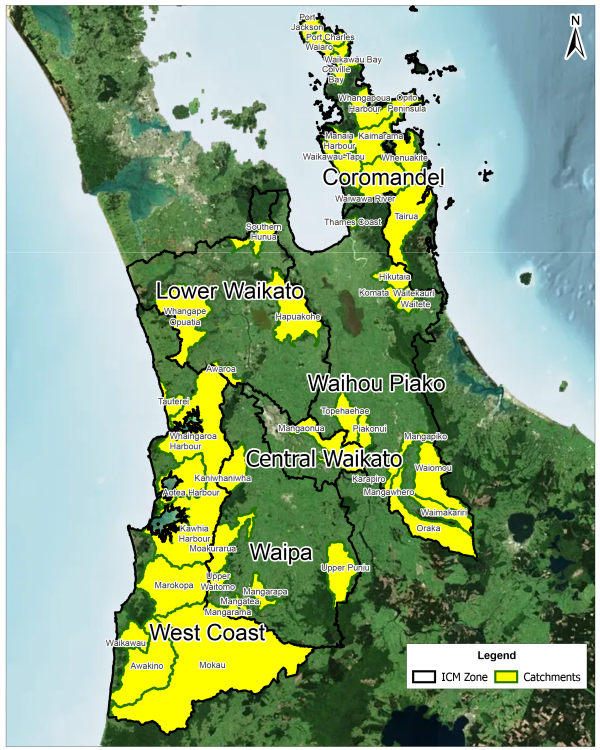Waikato secures $2.8 million to combat hill country erosion
| Published: | 17/05/2023 |
Waikato Regional Council has secured $2.8 million from the Ministry for Primary Industries’ Hill Country Erosion (HCE) Programme in the latest round of funding announced on Sunday.
The council’s regional HCE programme is in its fourth year, and the new funding helps to extend it into 2027.
Some 43 per cent of Waikato land has a high potential for erosion due to high rainfall, steep slopes and weathered geology. In hill country farming areas, the risk of erosion increases if the land has little protective vegetation or it is poorly managed.
An estimated one million tonnes of soil erodes away annually along the western side of the region, from Port Waikato south to Mōkau.
Soil erosion can impact the clarity of rivers and waterways, damage farming and other infrastructure, and reduce soil quality and productivity. High sediment levels also impact the in-stream ecology as well as the cultural and amenity values associated with waterways.
Since 2019, the council’s HCE programme has targeted the highest erosion risk areas and supported local farmers and landowners to take protective measures such as retiring, fencing and planting steeper farmland.
Climate change is likely to increase the occurrence of high intensity rainfall in parts of the Waikato region and planting poplars and other species reinforces slopes and reduces the current and future risk of soil erosion and sediment entering streams.
Previous funding has been vital to Waiwhakaata Trust’s efforts to prevent erosion. The trust manages 147 hectares of farmland alongside the Moakurarua Stream near Ōtorohanga, which feeds into the Waipā River.
So far, they have retired their steepest land and planted 16,000 trees across 24 hectares, making visible improvements to the surrounding waterways.
Waiwhakaata Trust Chair James Pinfold said working with Waikato Regional Council minimised the effort and expense: “If we had done this on our own initiative, then costs would have easily run into the hundreds of thousands.
“The council took care of the paperwork, oversaw all of the operations, and used local fencing operators and suppliers.”
Waikato and West Coasts Catchments Manager Grant Blackie said the council wants to hear from farmers and landowners with steep hill country erosion issues.
“Our whole strategy relies on working with locals to deliver these environmental and economic outcomes, so we really want people with erosion-prone land to get in touch with us.
“Together with programme partners in the next four years, in priority catchments we can build 253 kilometres of fencing and plant 560,000 native species alongside almost 100,000 exotic species that provide the best defence against erosion.”
To find out if your property is eligible for funding contact the council on 0800 800 401.

Waikato region with areas eligible to apply for funding in yellow.




To ask for help or report a problem, contact us
Tell us how we can improve the information on this page. (optional)